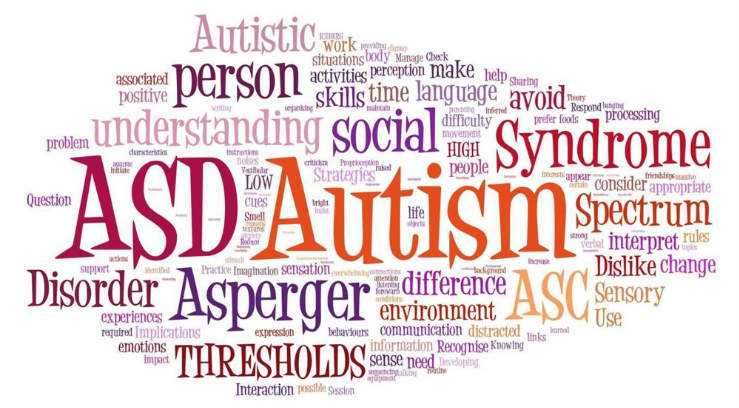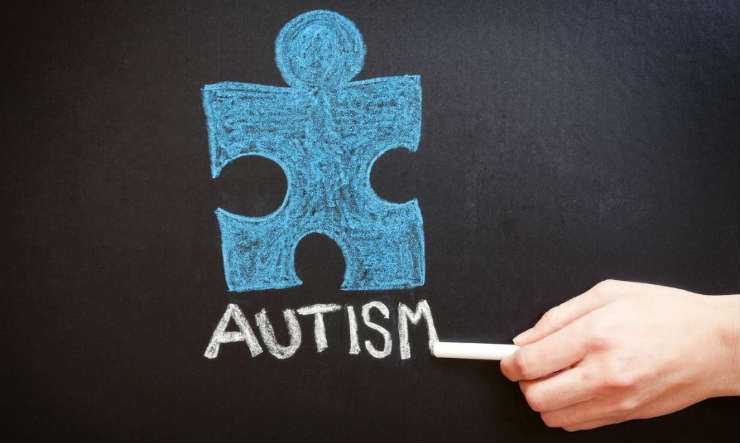Autism and ADHD | Signs, Treatments and Therapies

- https://www.cdc.gov/ncbddd/autism/data.html
- https://www.appliedbehavioranalysisprograms.com/historys-30-most-inspiring-people-on-the-autism-spectrum/
- https://www.psychiatry.org/psychiatrists/practice/dsm
- https://www.cdc.gov/ncbddd/autism/signs.html
- https://www.nichd.nih.gov/health/topics/autism/conditioninfo/causes
- https://www.spectrumnews.org/news/autisms-sex-ratio-explained/
- https://www.mayoclinic.org/diseases-conditions/autism-spectrum-disorder/symptoms-causes/syc-20352928
- https://www.nichd.nih.gov/health/topics/autism
- https://www.psychologytoday.com/intl/therapy-types/applied-behavior-analysis
- https://network.autism.org.uk/good-practice/case-studies/why-occupational-therapy-important-children-autism
- https://www.musictherapy.org/assets/1/7/Fact_Sheet_ASD_and_MT__8-26-15.pdf
- http://www.jmbe.org.tw/files/1961/public/1961-5094-1-PB.pdf
- https://www.friendshipcircle.org/blog/2017/02/01/5-research-backed-benefits-of-weighted-blankets-and-vests/
- https://www.webmd.com/add-adhd/childhood-adhd/attention-deficit-hyperactivity-disorder-adhd
- https://www.helpguide.org/articles/add-adhd/attention-deficit-disorder-adhd-and-school.htm/
- https://www.ncbi.nlm.nih.gov/pmc/articles/PMC3149116/
- https://www.additudemag.com/autism-aspergers-adhd-symptoms-in-children/
- http://sitn.hms.harvard.edu/flash/2016/research-into-our-sense-of-touch-leads-to-new-treatments-for-autism/
- https://www.tandfonline.com/doi/abs/10.1300/J004v24n01_05
- https://onlinelibrary.wiley.com/doi/10.1111/jsr.13743
Millions of brilliant and creative individuals live fulfilling lives on the autism spectrum, making enormous contributions to society, education, science, and the arts.
- Mozart
- Charles Darwin
- Bill Gates
- Dan Aykroyd
- Hans Christian Anderson
- Emily Dickenson
- Temple Grandin
- Daryl Hannah
- Jerry Seinfeld
- Andy Warhol
And that’s just to name a few! Any individual with autism is certainly in good company.
What is Autism?
Autism is a unique disorder with symptoms and characteristics plotted on a spectrum to communicate severity.
Autism Spectrum Disorder (ASD), more commonly called “autism”, refers to a broad range (also called the spectrum) of conditions that affect both verbal and non-verbal communication, repetitive behaviors, and social skills.
- Difficulty communicating and/or interacting with others
- Limited areas of interest and repetitive behavior
- When the previously mentioned symptoms hinder an individual’s ability to properly function in work, school, or other parts of life.
Autism is a wide spectrum, meaning that symptoms and their severity fluctuate drastically. While some individuals with autism are non-verbal, others are high-functioning and their autism may not be obvious at first glance.
High functioning autism used to be called Asperger’s Syndrome, but in recent years, the DSM-5 has eliminated that name and now includes those characteristics under the umbrella of ASD.
Signs of ASD
The only way to know for sure if an individual has autism is for he or she to be evaluated by a clinical psychologist.
These evaluations will usually take place over three to four sessions in which the psychologist will test abilities and tendencies in three main areas:
- cognitive skills
- adaptive behavior
- specific ASD assessments based on age and ability
The psychologist will also consider the genetic and medical history and parent observations if the individual is a minor.
While it is important to remember that autism should not - and cannot accurately - be self-diagnosed, here are some common signs and symptoms of ASD.
Social/Communication/Interactive Behavior
- Limited eye contact
- Not looking at or listening to others
- Not including others in the enjoyment of their interests
- Not carrying on fluid conversations
- Talking excessively about a particular subject without noticing whether or not the audience is interested
- Unusual voice inflection
- Trouble empathizing with others’ points of view
Repetitive Behaviors
- Echolalia - repeating certain words or phrases
- Intense interest in a certain subject
- Getting upset by slight changes to routines
- Sensory Sensitivity
- Recalling details and information; an unusually strong memory
- Stimming behaviors, hand-flapping
Other signs that ASD may be present include strong visual or auditory learning styles, excelling in math, science, or the arts, and insomnia or trouble sleeping.
Most commonly, autism causes difficulty with communication and social interactions, and it is also characterized by repetitive thoughts and actions.
Sometimes, the symptoms of ASD can mimic those of other disorders or illnesses. General health screenings are an important step before proceeding to psychological evaluations.
Hearing tests, blood tests or a physical may be conducted by a primary care physician to first rule out any other factors contributing to autism-like symptoms.
Causes and Risks Associated With ASD
Some risk factors may include having a sibling or immediate family member with ASD, advanced parental age, other genetic conditions like Down syndrome, fragile X syndrome, Rett syndrome, Tuberous Sclerosis, and low birth weight.
However, some research suggests that due to the broad range of symptoms and the different ways boys and girls manifest those symptoms, there might not be as much of an actual discrepancy between boys and girls and the presence of autism.
Rather, it just may be that boys are more commonly diagnosed because the way they show signs and symptoms aligns more closely with the traditional view of what autism looks like.
Treatments and Therapies for Autism
Common therapies for ASD may include the following:
- anger management
- family therapy
- sensory processing therapy
- animal-assisted therapy
-
music therapy (fact sheet (pdf))
- speech therapy
- massage therapy
Depending on the severity of symptoms, a medical professional may prescribe an antipsychotic medication to treat symptoms like anxiety, obsessive-compulsiveness, or depression.
It is not only positive experiences that can help. For example, massage therapy creates a binding experience with the therapist and also may help improve relationships for children with ASD.
Since insomnia is often a symptom of ASD, sleep aids may sometimes be prescribed as well.
There are natural remedies for insomnia that may also benefit those on the spectrum. Weighted blankets may be a great way to help individuals with ASD ease symptoms of anxiety or insomnia.
Individuals with autism often experience sensory overload or insomnia. Many with ASD are sensitive to certain textures, lights, sounds, smells, or tastes.
For people with autism, the world itself is often an affront to the senses, causing individuals to feel overwhelmed. Natural therapies, such as Deep Touch Pressure, can be highly effective in soothing an overwhelmed nervous system.
The science behind Deep Touch Pressure is the same science behind hugs.
When someone is upset, we instinctively reach out to hug and comfort them because our bodies understand - even when we do not - that firm, yet gentle pressure, which is so comforting.
This is why weighted blankets and weighted vests have been utilized in the autism community for years.
Having moderate weight evenly distributed over the body naturally calms the nervous system, often allowing an individual to pay attention more closely or fall asleep more easily.
Deep Touch Pressure Therapy for Autism

The body has eight sensory systems, including the proprioceptive system and the tactile sensory system.
The proprioceptive system receives and processes information from muscles and joints; the tactile sensory system interprets messages taken in by touch.
For individuals on the autism spectrum, the body’s nervous system struggles to properly process the information received by these sensory systems.
This can result in a sensory overload that causes extreme stress and anxiety, with the mind feeling overwhelmed by the senses it cannot adequately process.
Deep Touch Pressure is a technique in which firm but gentle pressure is applied to the skin or joints, providing proprioceptive input to the body. Firm hugs, cuddling, compression clothing, and weighted blankets all use DTP to comfort and calm the nervous system.
For kids and adults with autism, weighted blankets can be a great way to soothe and comfort overwhelmed nervous systems, especially at night when anxiety can translate into insomnia.
Weighted blankets have been prescribed by occupational therapists for years to benefit those on the autism spectrum.
Deep Touch Pressure from a weighted blanket can help relax muscles, increase circulation, reduce self-stimulatory behaviors, improve focus, and improve sleep.
What is a Weighted Blanket?
A weighted blanket is just a blanket with weights in it. They usually consist of several square pockets filled with weights such as poly-pellets, glass beads, or even rice.
The squares are sewn together like a quilt. This quilting technique is what helps distribute the weight evenly over the body.

Weighted blankets can be made in any size since the person using the blanket will determine what is the correct length and weight.
Manufacturers will specifically list the dimensions and weight of blankets for sale and some offer suggested dimensions based on the height or weight of the consumer.
Weighted blankets are effective tools for managing characteristics of autism and ADHD because of something called Deep Touch Pressure, a therapy technique that calms the nervous system.
How Heavy Should a Weighted Blanket Be?
Weighted blankets can range from 5 to 50 pounds. For kids on the spectrum, it is important to find a blanket that is heavy enough to provide adequate DTP, yet light enough for them to move it around easily on their own.
Generally, a weighted blanket for children and young teens should be approximately 10% of their body weight, plus one to two pounds. For instance, a child who weighs 65 pounds should use a weighted blanket that is 11 or 12 pounds.
Check out this In-Depth Guide about How to Choose the Right Weighted Blanket.
Because of their density, weighted blankets can also get quite hot at night. Consider choosing a weighted blanket made from breathable cotton blends as opposed to polyester, which will hold in heat.
Of course, because most individuals with autism have sensory issues, the fabric of the blanket will need to align with their sensory preference.
If someone is uncomfortable because of how the blanket feels, they will be much less responsive to the tactile sensory input the weighted blanket offers. Popular fabric choices include cotton, velvet, and satin.
Weighted Vests
While weighted blankets can be a great option for applying Deep Touch Pressure at night, some individuals need its calming effects during the day, as well.
Weighted vests are also commonly prescribed by occupational therapists and can also be purchased independently from a variety of online retailers.
Weighted vests should only weigh 5 to 10% of a child’s body weight and only need to be worn during 20 to 40-minute intervals. These garments should not be worn all the time because of the strain it can cause the skeletal system.
Consult a doctor or occupational therapist to plan a vest-wearing schedule that will not put too much strain on young, developing bodies.
ADHD

ADHD is a neurobehavioral disorder characterized by an inability to focus, impulsive movements, and hyperactivity.
Work performance and obligations are often negatively impacted by the effects of ADHD with the disorder going undiagnosed.
ADHD can only be diagnosed by a doctor. Treatment may or may not include medication, therapy, or a combination of both.
Remember, output blocks input. Often, individuals will respond with hyperactivity to an environment (output) because their brains cannot process the input from their sensory systems (input).
Of course, hyperactivity can also hinder healthy sleep patterns. individuals with ADHD not only have trouble falling asleep, but they wake often throughout the night, have anxiety when it is time to sleep, and can even experience breathing problems when trying to sleep.
Many parents, as well as adults with ADHD, turn to medication to manage their hyperactivity, inattentiveness, and insomnia.
However, many prescription medications offered for ADHD have controlled substances that can be habit-forming and have negative side effects.
While medication can effectively manage some symptoms of ADHD, some parents maintain valid reservations about medicating their child’s growing brain. More than ever, individuals are seeking natural ways to combat the hyperactivity and insomnia that plague many with ADHD.
Weighted blankets are highly effective, all-natural way to calm the nervous system, the brain, and the body through the science of Deep Touch Pressure.
Is ADHD on the Autism Spectrum?
Most children on the autism spectrum have symptoms of ADHD — difficulty settling down, social awkwardness, the ability to focus only on things that interest them, and impulsivity. ADHD itself, however, is not part of the autism spectrum.
Weighted Blankets and ADHD

Deep Touch Pressure can greatly benefit individuals with ADHD, making weighted blankets a good option to consider.
For additional treatment of ADHD symptoms, consider other times to implement the science behind weighted blankets, rather than just at bedtime.
Try wrapping up in a weighted blanket while reading to help focus on the content, or draping a weighted blanket over the lap during homework time.
During long car rides, which can be extremely difficult for those with impulse and hyperactivity issues, try covering with a weighted blanket to compress the sensory symptoms and relax.
When transitioning from high energy activities to quiet activities, cover with a weighted blanket to calm the mind and redirect focus.
Also, using a weighted blanket just 20 minutes before bedtime can help the body transition into sleep and reduce the amount of time tossing and turning.
Conclusion
Both autism and ADHD affect millions of individuals in America. The presence of these disorders can negatively impact a person educationally, vocationally, emotionally, and socially.
For those on the autism spectrum, choosing one of the best weighted blankets can provide a great tool for managing stress, anxiety, and insomnia.
For kids with ADHD, using a weighted blanket can help calm the mind and body, enabling them to better focus.
Some people use weighted blankets as a natural tool to help them avoid medication.
Others use them along with other treatments to enhance their positive effects and regulate healthy sleep patterns.
Either way, weighted blankets are a great resource to help individuals with autism and ADHD calm their mind and body during times that require quiet focus, as well as at bedtime.
Consider the benefits of Deep Touch Pressure through weighted blankets to see if it is a good option for managing symptoms of autism and ADHD.
